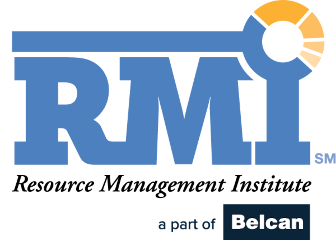No two professional services firms are exactly alike. But, there are many commonalities shared by every business. And today, one thing that every professional services organization has in common is the continual balancing act between internal full-time staff and freelance contract workers. Sure, there are differences in skill, experience, and speed that differentiate your full-time and contract employees, but the choice between these two resourcing options can often be difficult on a task-by-task basis.
Making the right choice between your resources can have a gradual but critical impact on project success, financial margins, client satisfaction, task timelines, and more. But the question is, when do you make the trade off between your contractors and full-timers? Knowing when to make either choice will have many positive effects for your professional services organization in both the short and long term.
When to Choose Internal Staff
It can be easy for routine and familiarity to drive resource managers toward full-time employees when selecting task assignments. However, there are many important, necessary reasons for choosing a full-time resource over a freelancer when planning a project.
In the case of very picky clients, choosing internal staff who have worked with the client before can prevent many complications and dissatisfaction. This can be especially important for critical tasks and client-facing assignments, with freelancers helping to meet other project needs that have less exposure to the client. We know from working with businesses using Kantata to develop our new Right Resource capabilities – which enables users to create tailored resumes for their project team that can be sent to key project stakeholders – that presenting the right team to their clients, and the right context about the differentiated skills and experience those resources have, can be a make or break moment in any services deal cycle.
When projects rely on a large amount of non-billable work to accomplish, full-time workers will be the best choice. While it’s not ideal to fill up your employee’s schedule with non-billable tasks, it’s better to put these assignments on your internal staff than on contractors, whose limited amount of time can instead be used on billable tasks that use their uncommon skills.
There’s a fine balance to be found in assigning recurring tasks to either full-time or contract workers. If you find that these tasks will be part of your weekly or monthly schedule indefinitely and can be done by several different internal staff members, then it may be best to choose your full-time employees. However, if it requires a specific skill only found in freelancers but not used enough to justify a full-time hire, it might be best to choose a contractor. In the event that this assignment happens regularly, it can help establish a stable, healthy relationship with your freelancers.
When to Choose Contractors
Choosing to look outside your organization for contract talent can be intimidating the first time, but establishing the right processes, creating good relationships with freelancers, and knowing exactly what you want can completely change your approach to contract work.
The simplest, most important reason behind hiring a contractor for a project is needing a skill that your full-time employees don’t have. Typically, this will be an uncommon skill that may be needed from time to time but isn’t in demand enough to hire someone full time. Successful companies create a comprehensive database of team member skills and detail the skills relevant to every task needed for a project. Comparing these tasks and available skills will quickly highlight where your team will fall short before a project begins and help you make effective freelancer hiring decisions.
As your company develops its pool of freelancer talent, you can create a database of freelance skills, as well, which will make contracting decisions easier and quicker. This is why Kantata has developed Talent Network, which makes it easy for professional services organizations to add external partners and independent contractors to their resource pools. With the ability to access and leverage talent, consider hiring a contract worker whenever your full-time workers don’t align with task needs correctly, when the timeline of a project cannot work with only your internal staff, and when high client demands require a bigger workforce than your full-time staff can meet. When aligned with your internal staff, contractors can help your business scale to any need at any time.
Keeping the Balance in a Networked Economy
It can be easy to interpret this decision making between contractors and full-time employees as a sort of war within your company, but this is far from the approach that any organization should take.
Both internal staff and freelancers are critical to the overall success of your company and bring unique skills, insights, and enablement to everyday work. Understanding when to use each, how to enable them to do their best work, and keeping the lines of communication open so any gaps in assignments or changes in roles don’t cause ill will are crucial in preventing unnecessary issues from happening.
When you have the right balance between full-time and freelance resources supported through well-designed resource management solutions and strong communication apps, you can create a networked economy at your business. With a constantly changing economy and a likely recession that will affect every industry, it’s crucial to have a team ready to take on a constantly changing professional services market and whatever unexpected challenges may come with it.
Ryan Montano is a technology professional with a passion for Product Management, Product Marketing, and Product Development. His areas of focus include B2B SaaS, Project Management, Analytics, Machine Learning, Artificial Intelligence, UI/UX design, and Startup Ventures. Ryan has spent nearly a decade in product development working closely with R&D and marketing teams on long-term strategic planning. This has allowed him to help shape countless key technology features and requirements that capture the essence of product value for clients.





